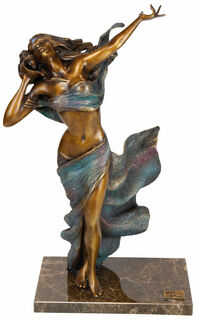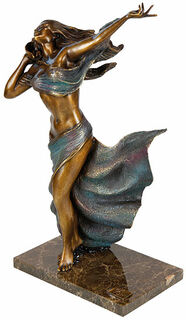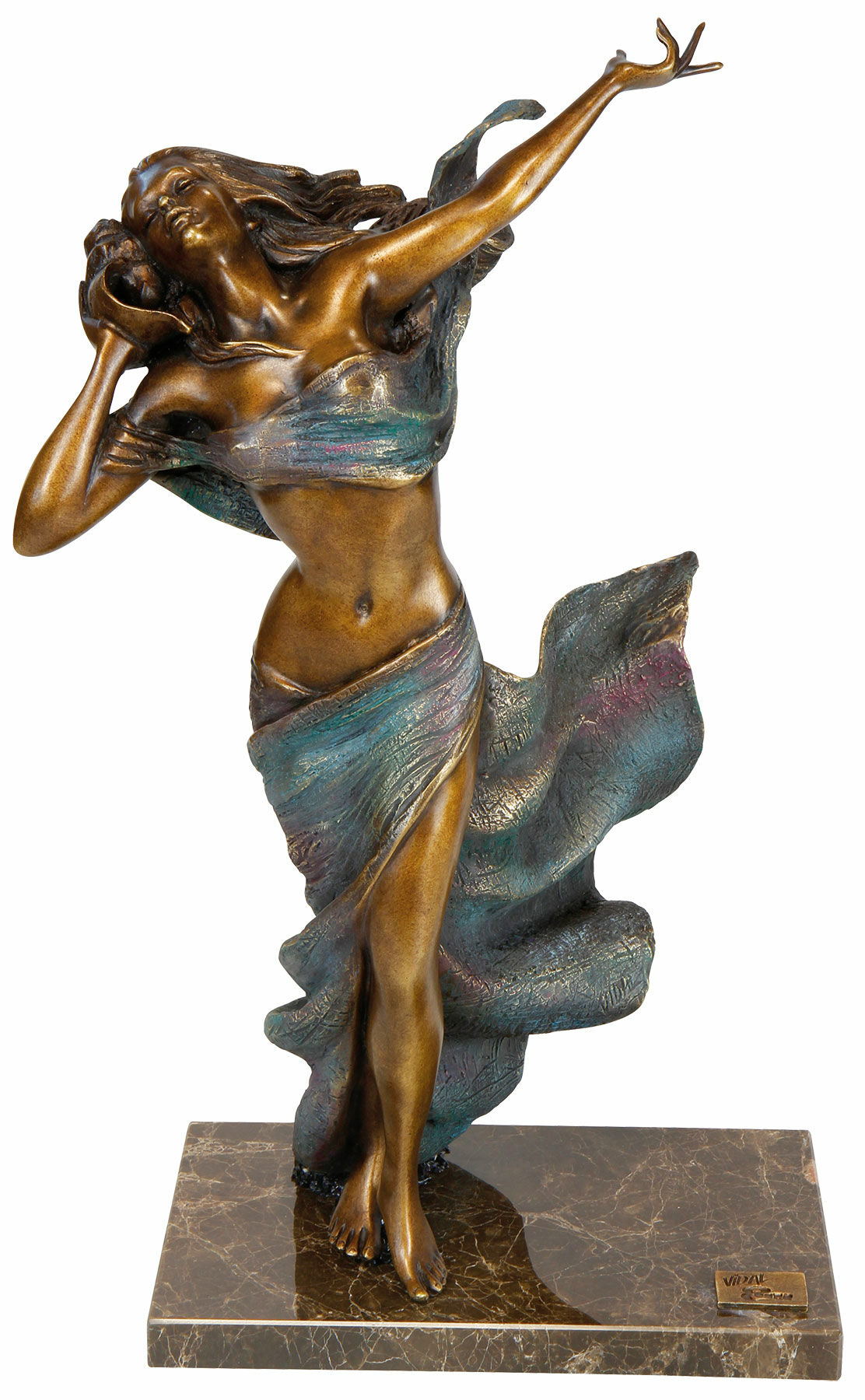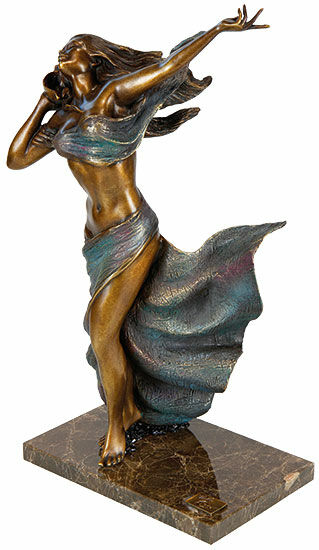Sculpture "Sea Symphony", bronze
Sculpture "Sea Symphony", bronze
Quick info
limited, 2,999 copies | signature | numbered certificate | bronze + marble | patinated | total size 49 x 26 x 17 cm (h/w/d) | weight approx. 8.4 kg
Detailed description
Sculpture "Sea Symphony", bronze
"The body is the beach of the soul", according to an old saying. Sensual beauty listening to the sound of the ocean through a shell, by the Spanish sculptor Vidal (*1953)
Fine bronze sculpture, patinated by hand. On a marble pedestal. Limited edition of 2,999 copies, with numbered certificate. Signature. Size including pedestal 49 x 26 x 17 cm (h/w/d). Weight approx. 8,4 kg.
Customer reviews
schnelle Lieferung, hervorragend
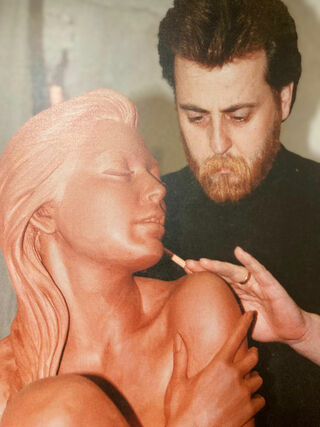
About Manel Vidal
Manuel Vidal was born in 1953 in Spain. Already as a child, the artist showed a great interest in sculptural work and sculpture. However, as he could not count on family support, he applied his artistic skills in the textile industry. When in 1981, the art school "Escuela de Artes y Oficios" was founded in his hometown of La Pobla de Claramunt, he took over the position of the headmaster there. After a few years, he gave up this position in order to devote himself entirely to his sculptural work.
He created sculptures that showed a clear tendency towards the figurative in dynamic – almost dance-like movement. In his thematic world, the human is the centre of a constantly renewing creation. Like the great masters of Greek antiquity, he is always in search of the truth and the origin of human existence. He breaks up the primary rock and shapes it into sculptures of unique beauty and expressiveness.
An alloy of copper with other metals (especially with tin) used since ancient times.
When casting bronze, the artist usually applies the lost-wax technique which is dating back more than 5000 years. It's the best, but also the most complex method of producing sculptures.
First, the artist forms a model of his sculpture. It is embedded in a liquid silicone rubber mass. Once the material has solidified, the model is cut out. The liquid wax is poured into the negative mould. After cooling down, the wax cast is removed from the mould, provided with sprues and dipped into ceramic mass. The ceramic mass is hardened in a kiln, whereby the wax flows out (lost mould).
Now we finally have the negative form, into which the 1400° C hot molten bronze is poured. After the bronze had cooled down, the ceramic shell is broken off and the sculpture is revealed.
Now the sprues are removed, the surfaces are polished, patinated and numbered by the artist himself or, to his specifications, by a specialist. Thus, each casting becomes an original work.
For lower-quality bronze castings, the sand casting method is often used which, however, does not achieve the results of a more complex lost-wax technique in terms of surface characteristics and quality.
A plastic work of sculptural art made of wood, stone, ivory, bronze or other metals.
While sculptures from wood, ivory or stone are made directly from the block of material, in bronze casting a working model is prepared at first. Usually, it is made of clay or other easily mouldable materials.
The prime time of sculpture after the Greek and Roman antiquity was the Renaissance. Impressionism gave a new impulse to the sculptural arts. Contemporary artists such as Jorg Immendorf, Andora, and Markus Lupertz also enriched sculptures with outstanding works.

